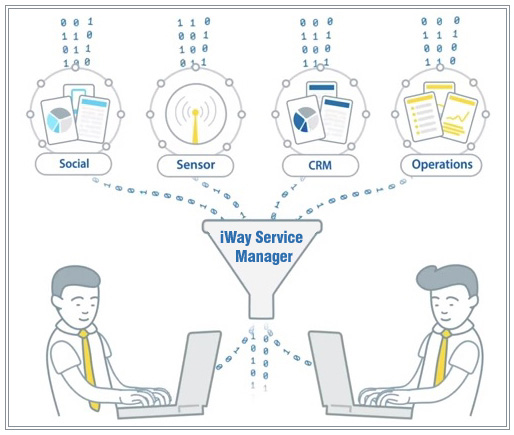Keeping an eye on IoT
What Is the Internet of Things (IoT)?
The Internet of Things (IoT) is an ecosystem that includes physical devices and objects, as well as the hardware, software, and sensors, that communicate over an IP network, enabling those devices and objects to collect and share data.
IoT is an instance of the more extensive general class of cyber-physical systems (for example, smart homes, smart health, intelligent transportation, smart cities, and smart grids, such as power plants). IoT is also finding uses in shopping centers, agriculture, medical applications, environmental monitoring, and security.

IoT devices/sensors collect data and then autonomously move this data to other devices and to sophisticated engines capable of performing analytics based on that information.
Today, IoT is helping organizations enhance their products and services, monitor operations in real time, track sales and other activity, develop location-based discounts, assess and manage customer experience, and uncover operational improvements.
Information Builders technology tools help you transform big data from IoT into something truly useful. By breaking down data silos, cleansing the data, and integrating it with your existing data, we enable you to share those insights with stakeholders in real time, making your enterprise more productive and efficient.
Where Does iWay Service Manager Fit In?
iWay Service Manager (iSM) enables organizations to create, compose, and operate services, whether deployed as web services, APIs, or through other interfaces. By helping organizations reuse existing application and infrastructure investments, iSM lays the foundation for a quickly deployable and easily maintainable service-oriented and event-oriented architecture for IoT.
iSM Release 8 now offers integrated support for IoT applications with multiple roles in an IoT-based solution, including recipient, emitter, concentrator, and device.

iSM participates in IoT networks. It interacts with and acts as an IoT device, while also collecting and analyzing IoT messages. Consider the following use cases and scenarios:
- In a hospital setting, blood pressure sensors continuously send readings to iSM, which aggregates this data. Based on the resulting data, iSM can recognize unexpected patterns and send an immediate alert to a medical team.
- In a facility, access cards are used to operate automatic door locks. When an employee swipes their card, iSM is notified of the request for entry and checks against an employee database. If the employee is allowed access, iSM sends a signal to the automatic door lock, which unlocks the door.
iSM is a small, fast, and secure enterprise service bus (ESB) widely used around the world. With the introduction of many common IoT protocols, iSM can be effectively utilized in IoT networks. IoT-oriented protocols natively supported by iSM include:
- MQTT (Message Queuing Telemetry Transport)
MQTT enables a publish/subscribe messaging model in an extremely lightweight way. It is utilized for connections where a small code footprint is required and/or network bandwidth is at a premium.
- CoAP (Constrained Application Protocol)
CoAP is an application layer protocol widely used in resource-constrained devices, such as wireless sensor nodes.
- ZeroMQ (Zero MQ Distributed Transport Layer)
ZeroMQ is a high performance asynchronous network protocol used in distributed or concurrent applications.
In addition, iSM supports other protocols often used in IoT solutions, including Advanced Message Queuing Protocol (AMQP or RabbitMQ), REpresentational State Transfer (REST), WebSockets, and SOAP.
iSM can listen and emit on these protocols, giving it an easy place within a configured IoT network. In addition, iSM can be distributed on a single board computer (for example, Raspberry Pi), so that it can itself become a node on the IoT network.
In addition, when joined with Information Builders WebFOCUS enterprise business intelligence (BI) and analytics platform, iWay can make it easier to integrate IoT applications into your enterprise.
For example, Raspberry Pi single board computers are placed on the edges of a network. Each device has a copy of iSM installed. In this scenario, each iSM instance is acting as a sensor to monitor a specific condition (for example, temperature). The devices can be configured to communicate with each other to exchange temperature readings or to a standalone instance of iSM, which summarizes this data and then relays this data to WebFOCUS for further analytics and reporting.
Combining the newly integrated support for IoT applications with iSM ensures that a complete IoT-based solution can be quickly realized today, without additional modifications to your existing iSM framework. This directly translates to savings in cost and time.
